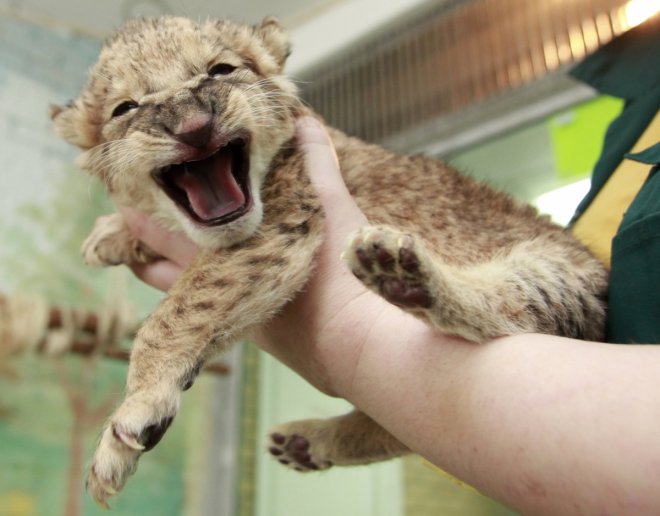
A perfectly preserved lion cub has been discovered in permafrost on the bank of Tirekhtykh River of Abyisky district in Yakutia. The cub, found by local resident Boris Berezhnov, belongs to a long-extinct lion species. Scientists have now expressed the possibility of making its clone, thereby reviving the species.
The discovery was unveiled in Yakutsk on Thursday, November 9. The animal is said to be between one and a half to two months old, however, it is not clear if it was male or female. The cub was so young at the time of death that it had not fully developed yet. The facial features though are fully visible even after being buried for about 50,000 years.
This discovery comes two years after two tiny cave lion cubs were unearthed in Siberia in 2015. The duo was named Uyan and Dina. In one of them, scientists even found traces of what appeared to be mother's milk. However, the recent discovery is better preserved than the younger specimens found previously, raising high hopes of cloning it successfully.
Expert Dr. Albert Protopopov stated, "It is a perfectly preserved lion cub, all the limbs have survived. There are no traces of external injuries on the skin." The cub's body is 45 centimeters long.
Talking about the discovery of Uyan and Dina, Protopopov says, "Everyone was amazed then and did not believe that such a thing is possible, and now, two years later, another cave lion has been found in the Abyiski district. The preservation degree is even better."
While the first duo was assumed to be approximately 12,000 years old, belonging to the time of the species' extinction, recent findings suggest that they might be between 20,000 and 50,000 years old. The exact age can be determined by analysis the specimens' teeth, reports The Siberian Times.
In September, Berezhnov came upon the body of an "unrecognisable animal" after the water level in the Tirekhtykh River dropped. This led to the discovery of this uniquely preserved cub.
Check out the amazing discovery below:









